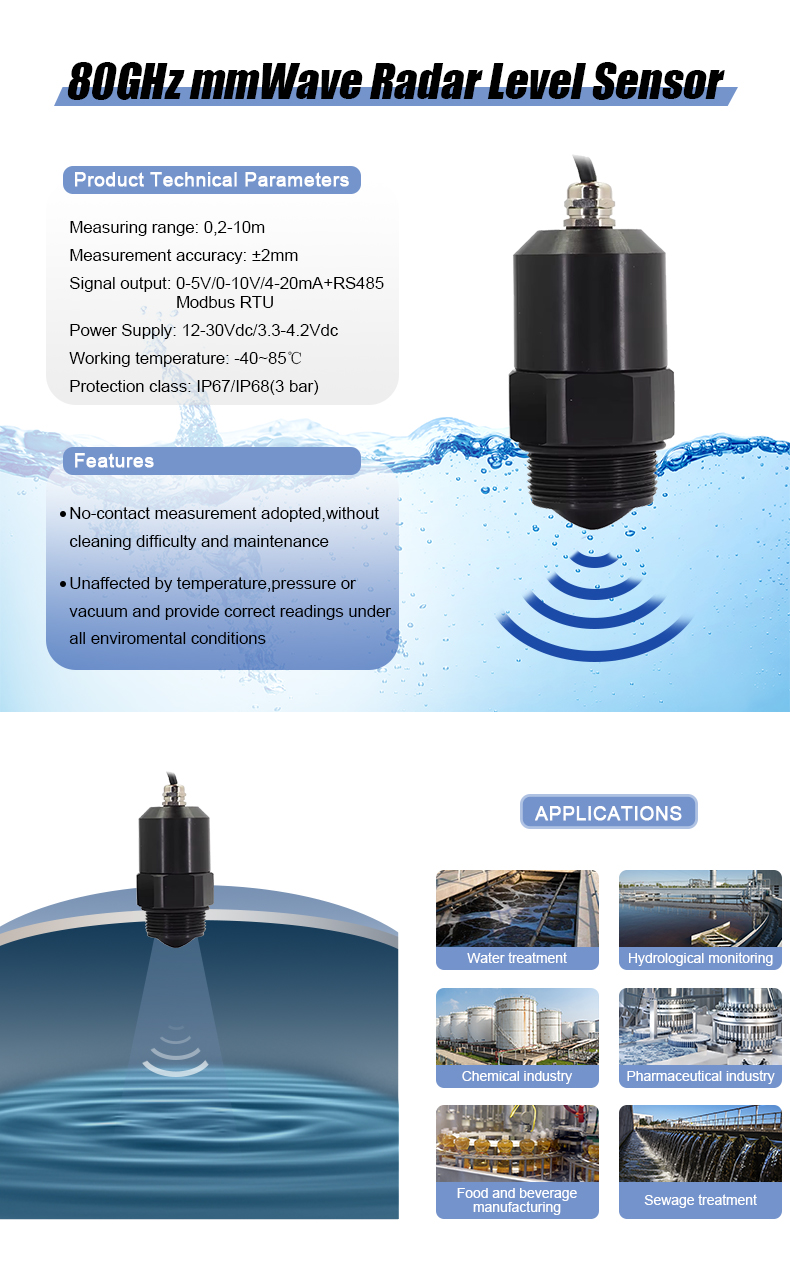With regard to the field integrated measurement error of less than 0.15% accuracy requirements, we believe that the existing 0.15% accuracy of the pressure transmitter to achieve this measurement accuracy is difficult, the field integrated measurement accuracy depends on a variety of factors:
1, the height of the water level converted to the pressure value of the error: P = ρgh
P: the height of the water level converted to the pressure value
ρ: the density of the water (usually 4 ℃ when the density of the water as a standard, in fact, the density of the water is with the change in temperature change)
g: the acceleration of gravity, is a constant
h: the water level height, the accuracy of the height of the water level depends on the measurement of the water level of the accuracy of the instrument and the reference frame.The higher the precision of the instrument, the lower the error.Reference base, if you take the bottom of the pool in the picture of your site as a reference base, due to the area is too large, it is difficult to ensure the flatness of the ground, the pressure measurement position and the reference point position difference of 1mm, the difference in pressure is about 10pa, if you measure the bottom of the barrel as a reference base, the area is small, the flatness is high, and the error will be relatively small.
Due to the variability of the above parameters, the converted theoretical pressure value and the actual pressure section can be somewhat different.
2, the measurement error of the pressure sensor:
pressure sensor accuracy of 0.15%, is in the laboratory environment, the sensor's nonlinearity, hysteresis, repeatability of the three indicators of the overall accuracy.In fact, the temperature changes in the field environment will also bring a certain degree of error, our general temperature coefficient is ± 0.02% FS / ℃.Coupled with the data conversion, there will be a certain error in the calculation.This will lead to the actual measurement process error value is higher than the sensor's own error.
3, the installation position of the error brought about by:
due to the small range of the sensor, high precision requirements, installation direction, position is different, will also bring a certain zero deviation, but this does not affect the slope of the sensor, this deviation can be calibrated through the later data processing, the corresponding small-range sensors on the installation of the requirements of the higher.The position of the mounting holes on both sides of the test drum and the theoretically calculated position are difficult to be exactly the same, and there will be a certain deviation, so that there will be a position that seems to be of the same height, and there will be a deviation between the measured value and the theoretical value.But after the installation position is fixed, because the slope of the sensor will not change, so the same distance between the relative amount of change in the measured value will not change, that is, the change rule of the sensor will not change.The above situation may occur in the field conditions, so with the existing 0.15% accuracy of the sensor to achieve the actual operation of the error does not exceed 0.15% is more difficult, all the equipment related to the test, must be higher than the need for accuracy of the accuracy of more than two levels of accuracy, in order to achieve the target accuracy, because the error is superimposed, and there are positive and negative.





